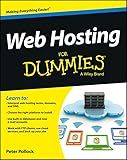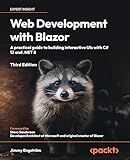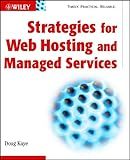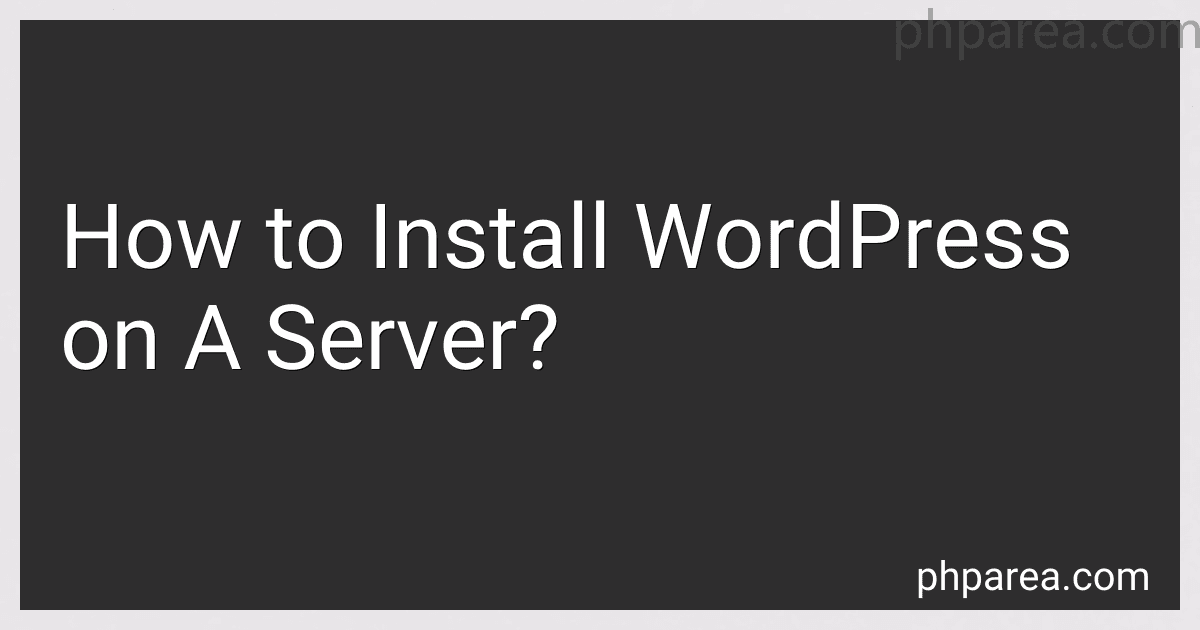Best Web Hosting Services to Buy in December 2025

Web Hosting For Dummies



Modern Web Development: A Beginner's Guide to HTML, CSS, Hosting, and SEO



Web Development with Blazor: A practical guide to building interactive UIs with C# 12 and .NET 8



The Ultimate WHM Guide (Web Hosting with cPanel)



A Moron's Guide to Web Hosting: On Amazon, Service, Servers and More



How to create website for beginners plus free domain and hosting



Strategies for Web Hosting and Managed Services



Moderne Web Entwicklung: HTML, CSS, Hosting und SEO für Anfänger (German Edition)


To install WordPress on a server, you will need to follow these steps:
- Choose a hosting provider: Select a reliable web hosting provider that supports WordPress. Consider factors like server performance, uptime, customer support, and pricing.
- Purchase a domain name: Register a domain name for your WordPress website. You can either purchase it through the hosting provider or a separate domain registrar.
- Download the WordPress files: Visit the official WordPress website and download the latest version of the WordPress software. It will be downloaded as a ZIP file.
- Extract the files: Unzip the downloaded ZIP file to get the WordPress folder.
- Connect to your server: Use an FTP client or your hosting provider’s file manager to connect to your server. Enter the FTP credentials provided by your hosting provider.
- Upload WordPress files: Upload all the extracted WordPress files to the root directory of your server. This can typically be done by dragging and dropping the files into the file manager interface.
- Create a MySQL database: Log in to your hosting account’s control panel and find the database section. Create a new MySQL database and assign a username and password to it. Make a note of the database name, username, and password for future reference.
- Configure the wp-config.php file: In the WordPress folder on your server, find the wp-config-sample.php file. Rename it as wp-config.php. Open the file and replace the placeholders for your database name, username, and password with the details of the MySQL database you created earlier.
- Run the WordPress installation script: Open a web browser and navigate to your domain name. You will be redirected to the WordPress installation wizard. Select the preferred language and click on the "Let's go!" button.
- Enter database details: Fill in the details of the MySQL database you created in the previous steps: database name, username, password, and database host. The database host is usually "localhost" unless specified otherwise by your hosting provider.
- Complete the installation: Click on the "Run the installation" button. Fill in the details for your website, such as site title, username, password, and email address. Click on the "Install WordPress" button.
- Access your WordPress dashboard: Once the installation is complete, you can log in to your WordPress dashboard using the provided username and password. From here, you can customize your website's appearance, configure settings, and start creating content.
Remember to keep your WordPress installation, theme, and plugins updated regularly to ensure security and optimal performance.
What is the purpose of a MySQL user for WordPress installation?
The purpose of a MySQL user for WordPress installation is to provide a secure and controlled access to the WordPress database. When setting up WordPress, a MySQL user is created specifically for the installation process. This user is granted the necessary permissions to manage the WordPress database, such as creating, modifying, and deleting tables, as well as performing other database operations.
By having a dedicated MySQL user, it ensures that the WordPress installation has limited access to the database, reducing potential security risks. It also allows for better organization and management of user privileges, as different MySQL users can be assigned different levels of access and permissions to the database.
What is the role of configuring wp-config.php during the WordPress installation process?
Configuring the wp-config.php file during the WordPress installation process is essential as it helps define the basic settings and parameters for the WordPress installation. Here are some of the main roles of configuring the wp-config.php file:
- Database Connection: The wp-config.php file contains the database connection details, such as database name, username, password, and host. These details are crucial for WordPress to establish a connection with the database.
- Security Keys: The wp-config.php file includes security keys and salts, which are unique cryptographic values used to add an extra layer of security to the WordPress installation. These keys are used to encrypt data stored in user cookies and authentication tokens.
- Table Prefix: During the installation process, the wp-config.php file allows you to set a table prefix for your WordPress database tables. It adds a prefix to the default database table names, making it more challenging for potential hackers to exploit vulnerabilities.
- Localization and Language Settings: The wp-config.php file enables the selection of the language of your WordPress installation. It defines the WPLANG constant, allowing WordPress to display the user interface in the desired language.
- Default Filesystem Method: Configuring the wp-config.php file allows you to define the default filesystem method for file operations, such as installing plugins or updating the WordPress core. This ensures proper file permissions and allows WordPress to write files without any issues.
Overall, configuring the wp-config.php file plays a crucial role in setting up the necessary connections, enhancing security, defining language preferences, and determining file operations for a stable and customized WordPress installation.
What is the importance of regular updates for a WordPress website?
Regular updates for a WordPress website are important for several reasons:
- Security: WordPress is a popular platform, which makes it a common target for hackers. Regular updates help to fix security vulnerabilities and protect your website from potential attacks.
- Bug fixes: Updates often include bug fixes to resolve issues and improve the overall performance and functionality of the website.
- Compatibility: Updates ensure that your WordPress website remains compatible with the latest versions of themes, plugins, and other software. This helps to prevent any conflicts or compatibility issues that may arise due to outdated components.
- New features: Updates often bring new features and enhancements to the WordPress core, themes, and plugins. By regularly updating, you can take advantage of these new features and improve the user experience on your website.
- Performance improvements: Updates can optimize code and improve the speed and performance of your WordPress website. This is especially important for maintaining a positive user experience and keeping visitors engaged.
Overall, regular updates help to keep your WordPress website secure, functional, and up-to-date with the latest technology advancements. It is essential to regularly check for updates and perform them in a timely manner to ensure the smooth operation of your website.
How to create a MySQL user for WordPress?
To create a MySQL user for WordPress, you can follow the steps below:
- Access your MySQL database using a database management tool or command line.
- Log in as a root user or an account with administrative privileges.
- Create a new MySQL user by running the following command: CREATE USER 'username'@'localhost' IDENTIFIED BY 'password'; Replace 'username' with the desired username and 'password' with the desired password.
- Grant all privileges to the user for the WordPress database by running the following command: GRANT ALL PRIVILEGES ON `database_name`.* TO 'username'@'localhost'; Replace 'database_name' with the name of your WordPress database.
- Flush the privileges to update the changes by running the following command: FLUSH PRIVILEGES;
- Exit the MySQL command line by running: exit
How to select and install a WordPress theme?
To select and install a WordPress theme, follow these steps:
- Login to your WordPress dashboard by entering your username and password.
- Once logged in, click on "Appearance" in the left-hand sidebar.
- In the Appearance menu, click on "Themes."
- On the Themes page, you will see a list of installed themes. To add a new theme, click on the "Add New" button.
- You can browse through the featured themes or use the search bar to find a specific theme. You can also filter themes by popular, latest, or specific features.
- To preview a theme, hover over it and click on the "Preview" button. This allows you to see how the theme looks before installing.
- Once you have chosen a theme, click on the "Install" button to add it to your website.
- After installation, you can choose to activate the theme immediately or return to the Themes page to activate it later.
- To activate a theme, click on the "Activate" button below the theme thumbnail.
- Now your new theme is installed and activated. You can further customize it by clicking on the "Customize" option or by using the theme settings provided.
Remember to carefully select a theme that suits your website's needs in terms of design, features, and compatibility with plugins. Additionally, ensure that the theme is regularly updated by the developer to maintain security and functionality.
